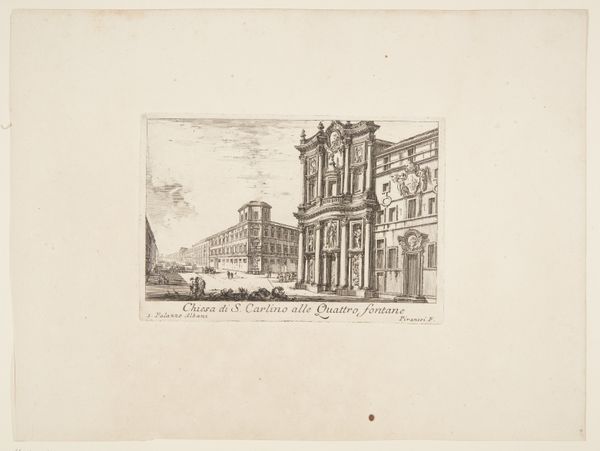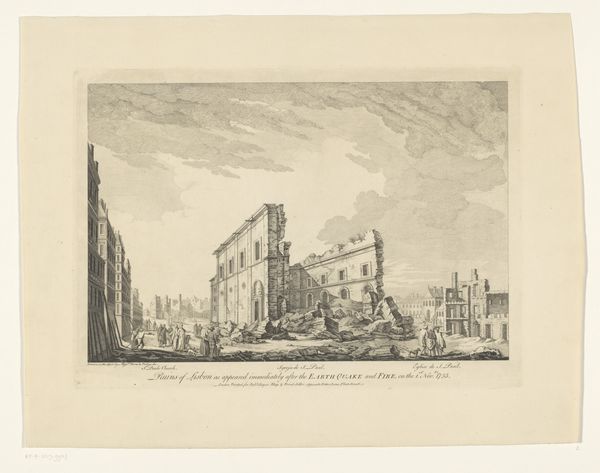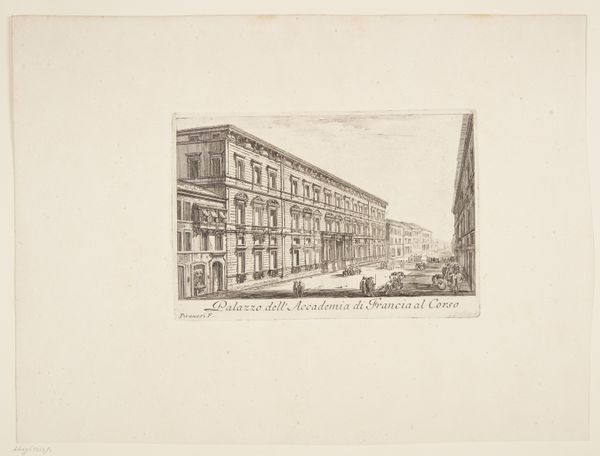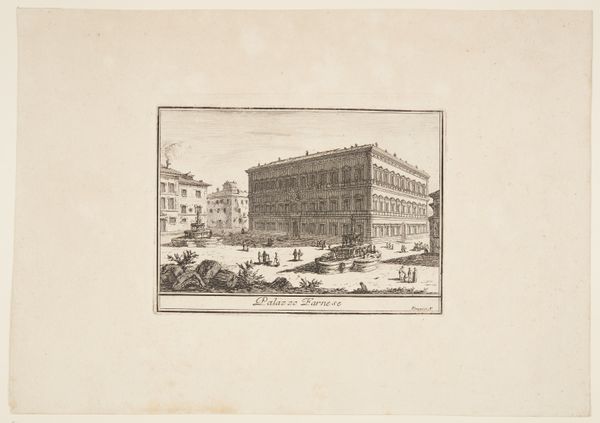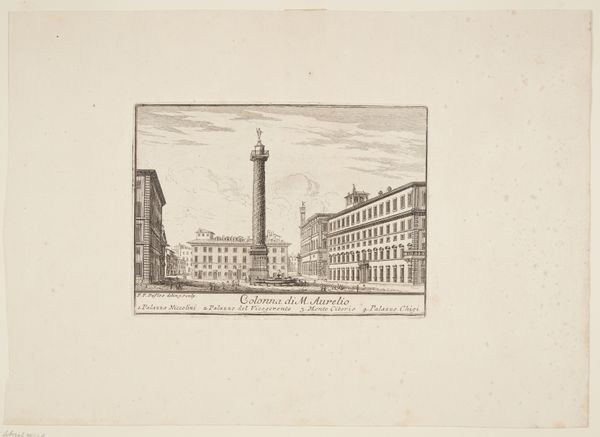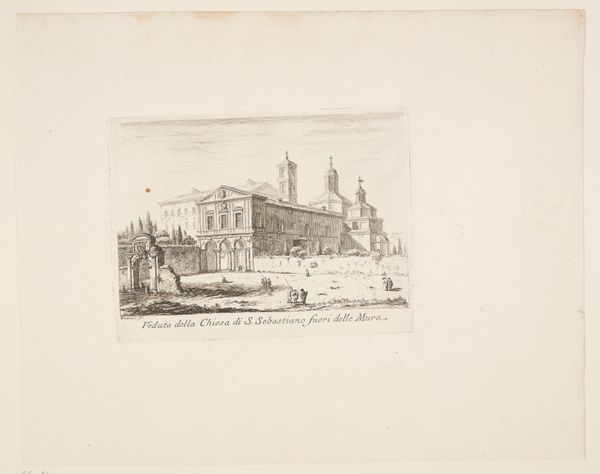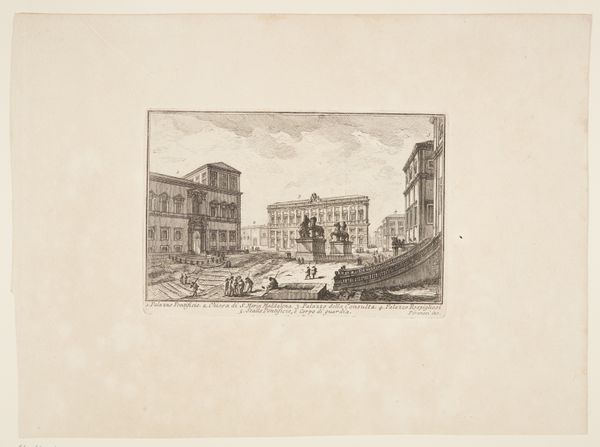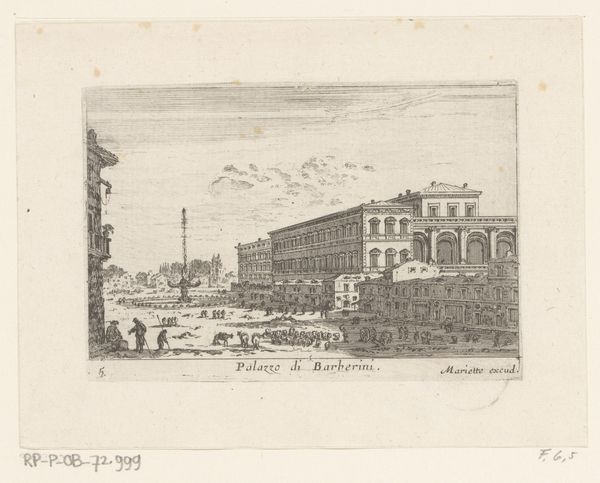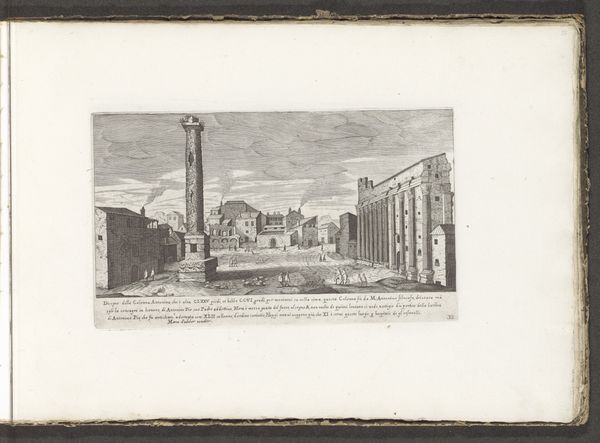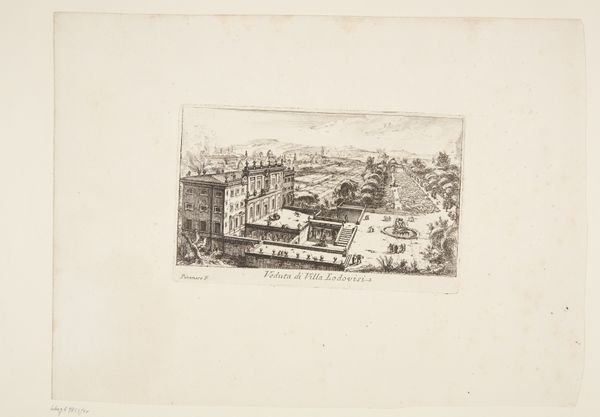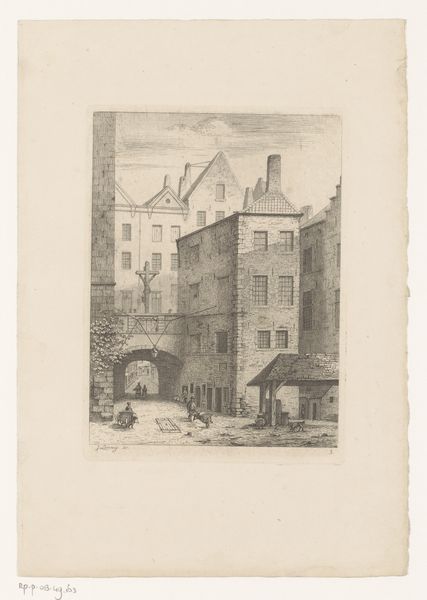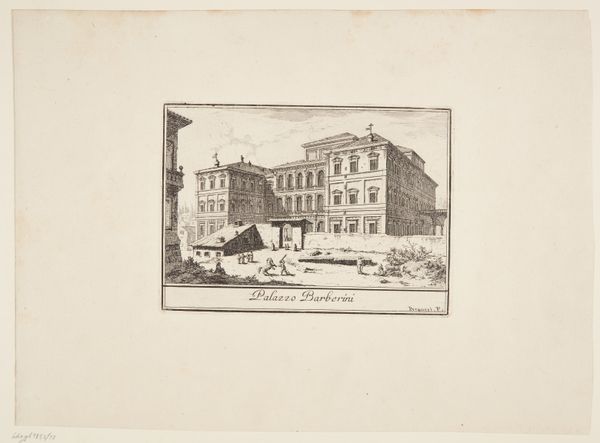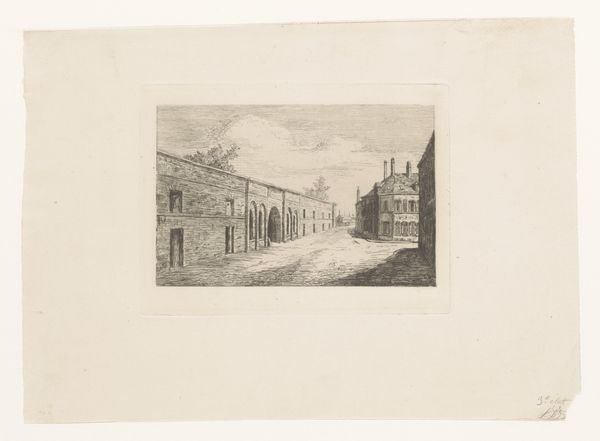
print, etching, engraving
#
baroque
# print
#
etching
#
etching
#
perspective
#
line
#
cityscape
#
history-painting
#
engraving
Dimensions: 113 mm (height) x 170 mm (width) (plademaal)
Curator: This is Giovanni Battista Piranesi's "View of the Theater of Marcellus," an etching and engraving completed sometime between 1741 and 1748. Editor: It feels melancholy, almost haunted. The sharp lines and heavy shadows create this sense of grandeur decaying, of history weighing down the present. Curator: Exactly! Piranesi was obsessed with Roman antiquity. The etching uses exaggerated perspective and dramatic lighting, drawing the viewer into this almost theatrical space. He really wanted to communicate the emotional weight of history. Editor: And it works, but to what end? We see the Theater of Marcellus not as a glorious monument but as a ruin repurposed, swallowed by the modern city. Are we meant to mourn this loss, or to question the very nature of imperial power structures, reflecting on the violence inherent to their construction? Curator: Perhaps both? Piranesi's imagery taps into the psychology of ruins. He saw Rome not just as it was but as a palimpsest of all its past iterations. Note how he populates the foreground with tiny figures, dwarfed by the architecture. Editor: Yes, those figures are key. They highlight the continued presence of life amongst these ruins, yet they're also passively moving about—complicit perhaps in overlooking history? They embody this tension of carrying on with everyday life against a backdrop steeped in powerful but potentially forgotten or misunderstood histories. Curator: Right, symbols become reinterpreted over time; power shifts. Editor: Well, this piece forces me to confront the uncomfortable aspects of heritage: who gets to control the narrative, and how does the past continue to shape the spaces we occupy and the power structures around us. Curator: I find Piranesi so adept at speaking across centuries; a timeless piece offering so many pathways of exploration into cultural memory and the ongoing role of the past in shaping our present realities. Editor: I see how it resonates across history. For me, this view insists that we stay conscious of history's influence and actively question the stories our built environments tell, demanding reflection on how societal values might become obscured by grand narratives and entrenched power systems.
Comments
No comments
Be the first to comment and join the conversation on the ultimate creative platform.
